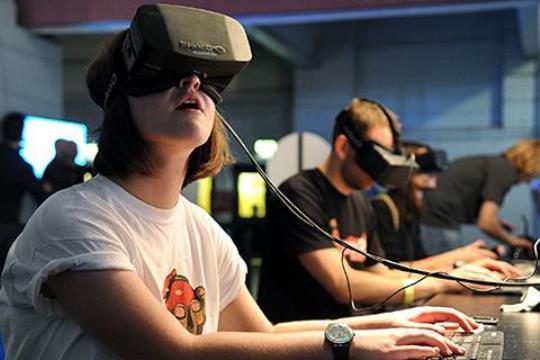
Alibaba has gone from an ecommerce company to its own economy. The Tmall Global Shopping day, Alibaba’s Single’s Day event, recorded 120.7 billion RMB (17.8 billion USD) in sales in one day. They also revealed some interesting plans for the coming future.
Robotics, AI, AR, and VR will be adopted across sectors like ecommerce, logistics, service sector, and finance to make user’s daily life smarter.
YunOS, a cloud-based data and service oriented operating system for the Internet of Things, will power a wide range of smart devices including smartphones, wearables, Internet cars, robots, and smart household appliances.
YunOS is estimated to take a 14 percent share of smartphone shipments in China to become the second-largest operating system in the market after Apple’s iOS. Alibaba wants the total shipment of YunOS-powered smartphones including Meizu, XiaoLaJiao, Doov and others to exceed 100 million units.
Below are some highlights from Alibaba’s Singles’ Day event showing how the company plans to push the envelope in ecommerce.
VR + Ecommerce
Alibaba’s Buy+ demo using HTC ViveAlibaba and HTC jointly demonstrated Alibaba’s new Buy+ mobile VR channel on the latest HTC-powered VR-ready smartphones. Alibaba is collaborating with Macy’s, Target, and Costco to enable its customers to purchase overseas item while enjoying the Buy+ VR experience. Users can choose where they want to shop, and can either go to Tokyo, Macy’s in New York, or a farm in New Zealand to buy their products.
AI + Payment
A user pays for a cup of coffee using Alipay’s facial recognition.Alipay might offer facial recognition payment in the future. Face-scan is used to verify user’s identity during the log-in process of user’s Alipay account to transact the order. Alibaba showed that facial recognition payment is technically feasible in the future. In September, Alibaba’s affiliate Ant Financial acquired U.S.-based EyeVerify, maker of the Eyeprint ID biometric platform.
Robotics + Service
Powered by YunOs, Pepper will scan passengers ID card and print their boarding pass.Humanoid robot Pepper may soon greet China’s air travelers. Powered by YunOs, Pepper will scan passengers’ ID card and print their boarding pass. It can also offer directions and translate English to Chinese. Pepper is born out of SoftBank Robotics Holdings; its robot business in mainland China, Hong Kong, and Macau will be operated by Alibaba Robotics, a joint venture established between SoftBank Robotics Holdings and Alibaba Group. Alibaba will provide the AI service for the robot and is responsible for the robot’s development and operations in Hangzhou.
AR + Logistics
Cainiao introduced an AR sorting system with Microsoft Hololense.Cainiao, Alibaba Group’s logistics affiliate, is a big-data driven intelligence logistics platform. To solve the logistics problems in China, Cainiao partners with warehouses and logistics companies. Aiming to make 24-hour delivery possible in China, and 72-hour delivery globally, the ecommerce behemoth is testing and exploring an AR sorting system. Using the Microsoft Hololense AR headset, the solution navigates workers to walk in shortest route to find the package located on the designated shelf. Then it scans the barcode and checks the product quality.
Robotics + Logistics
Alibaba’s robot will help move goods inside the warehousesAGV (Automated Guided Vehicle) will lift and move the sorting shelves filled with sorted goods to the designated places.
Cainiao has come up with an algorithm that can automatically calculate the most appropriate size of paper box for packaging certain products. The algorithm helps to save 5-15% of packaging materials.
Cloud + Car
Roewe RX5 is connected to Alibaba’s cloud YunOS.Roewe RX5 is the first mass produced YunOS-powered car. The car connects to the cloud via wireless and allows for smart devices to operate through its open platform. A drone can be programed to automatically follow the car and take pictures while users can interact with apps just like they do on a smartphone. Operations like navigating music, air conditioning can be controlled with voice commands.
Image Credit: TechNode